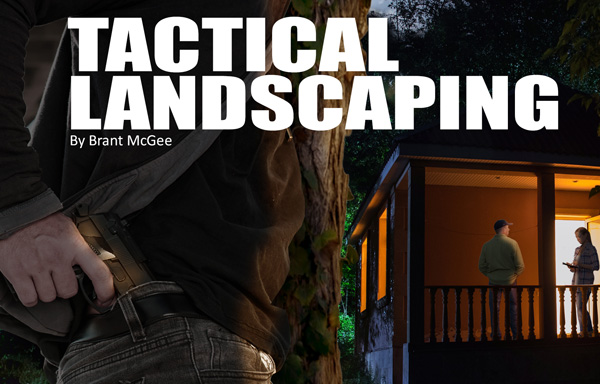In late 2009, my wife and I purchased a home built just a couple of years earlier and closed on it before any landscaping was done. Every bush, every tree, every stone, we placed ourselves. Some of the trees I planted in 2009 are now topping twenty or more feet tall and have filled in a large yard that once was nothing but open field. A landscaper told me the day when the first shovel hit the ground, the place was an open canvas.
As he walked the yard with flagged stakes to mark tree locations, I would take laps around the property, observing each location from a distance. The landscaper would stand in the front yard looking towards the house only, I don’t think he understood why I wanted so many different perspectives of each location to include from the front living room, where the shade of the trees would cast themselves in years to come. Clearly, we were painting on different canvases.
In another article, we talk about using landscaping to channel visitors to a known destination. Now we need to talk about using vegetation as a tactical screen to obscure the view from the outside while giving you cover and concealment.
Vegetation can create a formidable barrier if appropriately used. During WW2, Allied troops landed at Normandy and got first-hand experience of tactical landscaping in the form of hedgerows. Initially built by the Romans to divide parcels of land and farms, hedgerows were mounds of dirt nearly sixteen feet in height and covered in various types of vegetation. The Germans made full use of the cover, concealment, and compartmentalization of these terrain features during the invasion, and the Allies had to take them one at a time, each a fortress of its own.
Using vegetation of differing heights and shapes thoughtfully planted can create great cover and concealment, but that goes both ways and can conceal a threat just as easily as it conceals you. Keep in mind that depending on the type of vegetation, during the winter months, the trees or plants may drop their leaves and give a full view of your home from a distance. I personally tried to keep a good mix of deciduous trees and evergreens, so that in both winter and summer months, I have some form of defilade, albeit from different locations and vantage points.
Keep in mind that when using vegetation for security, you must maintain it. Keeping trees and shrubs trimmed a few feet above the ground along with the addition of landscape lighting, as we discussed in this issue, will prevent your attempted security addition from becoming an advantage to an aggressor. Another good idea is when deciding a planting location, try to imagine where the tree or bush will be in future growth. It is very easy to create blind spots in a few good growing years.
Another good approach is the utilization of landscape features. Ponds, large rocks, waterfalls, and even flowing rivers all can create a beautiful yard that will provide you and your family with the stress-relieving comfort of living in a wilderness area, and also can offer great tactical concealment with a natural tangle foot.
I have a good friend that builds these water features, and almost everything he has designed has not only slippery rocks and water but also low, dense, crawling vegetation that is almost impossible to walk through. Even if a water feature is too pricey, low-crawling vines are cheap, grow quickly, are maintenance-free, and are a pain to walk through, slowing anyone approaching.
During your journey to design a more tactically capable landscape, don’t hesitate to reach out to professional landscapers. Even if most don’t care about the security aspect of vegetation, many will be useful in making sure you are planting the proper types of vegetation in the appropriate areas of your yard. Some of my shrubs on the East side of my home will not work on the North or South sides due to the entirely different lighting conditions.
The last thing you want to do is dump a considerable amount of money into a project to see the plants perish in a year. The Romans designed the hedgerows in France more than 2,000 years before they became a tactical advantage that the Germans used to counter Allied assaults, and they are still there today. Good tactical landscaping takes time and energy, but with some forward-thinking, you’ll have a permanent feature to your home that looks good and serves as a force multiplier over an adversary.

